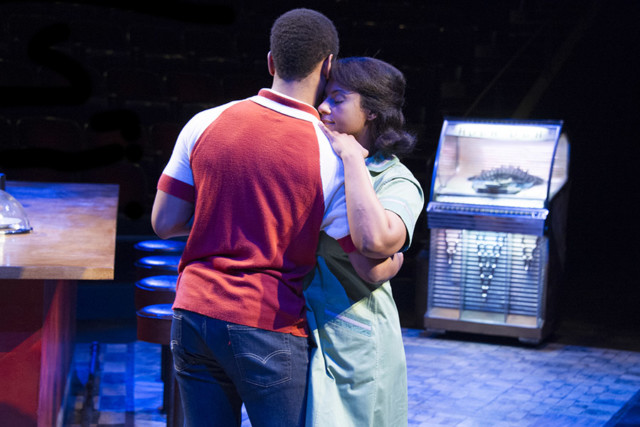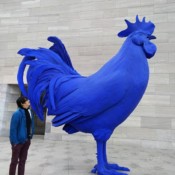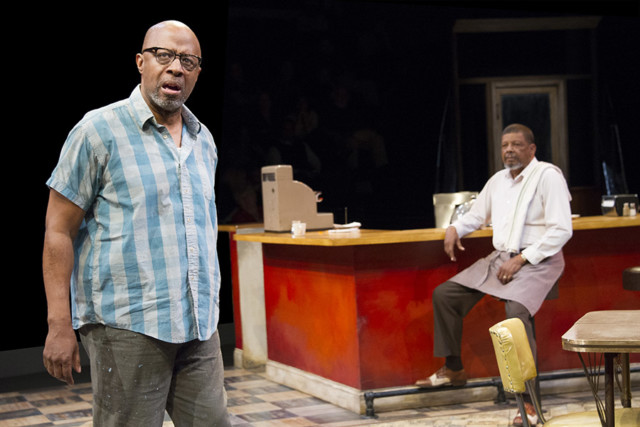Depending on how one looks at the world, August Wilson’s excellent play “Two Trains Running” is either great and/or depressing. Its candor about race and emotional punch makes it worthwhile to watch. It’s also unfortunate that the racial tensions and animosity portrayed in the play is still very much alive in today’s America. Directed by Juliette Carillo, it’s playing at Washington DC’s Arena Stage in Washington DC through May 6.
The play is set against growing racial tensions in the U.S., especially after the assassination of civil rights leader Martin Luther King Jr. The main characters are just trying to get by, get paid, and get off, and not necessarily in that order.
Ahmad Coo is a producer and copy editor for the Global Business show on CGTN America. His analysis represents his views alone.
The cast is anchored by Broadway veteran Eugene Lee who plays Memphis Lee, the owner of a struggling diner in Pittsburgh. The plot centers around his angling for a big payday from the city government who wants to buy his building and redevelop that area. But they’re trying to stiff him on the price. It doesn’t help that one of the richest businessmen in his neighborhood is also trying to lowball him for his commercial property.
“Two Trains Running” also has several subplots which center around other characters that really give the production its oomph. While Eugene’s struggles to sell his diner is the main story, that doesn’t mean the other subplots have less substance or weight. Woven together, it’s a marvelous work.
The closest thing I can compare Wilson’s script is to a classic jazz composition, where all the musicians get to display their chops. Jazz is mostly an improvisatory art, where musicians take turns driving the song into new unexplored regions.
Their styles or interpretations of the rhythm or structure dictate where the melodies go, and where they go can vary greatly. It can be a place of light and joy, or the dark recesses of the psyche and soul. But no matter how far they stretch the original composition, they stay within its structure, ultimately paying respect and adding their signature to the original tune.

(L to R) David Emerson Toney (Holloway), Carlton Byrd (Sterling) and Reginald Andre Jackson (Wolf) in August Wilson’s Two Trains Running, running March 30-May 6, 2018 at Arena Stage at the Mead Center for American Theater. Photo by C. Stanley Photography.
All of the actors in “Two Trains Running” are impressive, like bandmates in synch and playing to each other’s strengths.
All of the actors take turns riffing, jamming and putting their own spin on Wilson’s script. From Carlton Byrd’s touching portrayal of Sterling and his simple dreams of making it big, to Nicole Lewis’ take on the troubled Risa — there is no wasted breath or throwaway lines. It also helps that Wilson’s script is just as extraordinary as the actors.
While the play references some historical events, like the assassination of Malcolm X and MLK Jr., Wilson decided to place those events at the periphery. We just hear the characters talking about the events in passing, which makes it so much more intimate and immediate for the audience.
In discussing their observations about the world around them, we get a more authentic portrayal of the racial tensions and the fight for civil rights in the U.S. compared to an overwrought film like Spike Lee’s “Malcolm X” or Steven Spielberg’s “Lincoln”.

(L to R) Carlton Byrd (Sterling) and Nicole Lewis (Risa) in August Wilson’s Two Trains Running, running March 30-May 6, 2018 at Arena Stage at the Mead Center for American Theater. Photo by C. Stanley Photography.
I think Wilson also made a conscious effort to infuse the script with humor and moments of levity which can give the audience space to breathe and absorb the playwright’s overall message. It’s no fun to be constantly hammered with tragedy and drama. Ana DuVernay’s “Selma” is quite an achievement, but it’s an emotionally devastating film and rightfully so. At the end of it, the audience is angry, exhausted, and drained.
But Wilson’s handling of racial tensions and discrimination in the 1960s isn’t less emotionally resonant compared to its peers in film and theater. He creates tension through his characters’ divergent views on America. Some characters represent the old guard who have a very grim view of the country. They’re less hopeful and more cynical about the civil rights movement. For them, it’s every man for himself.
Then there are the more youthful characters. They’re doe-eyed and hopeful, but not overly naive about the workings of the world. They try to make their way but trip and fall repeatedly. But they’re relentless, getting back up again and again.
In the end, Wilson takes the higher road and adopts a more optimistic tone, preferring to see the light instead of the darkness of history. The characters eventually find some version of what they consider a life worth living, even if it wasn’t exactly what they were looking for.
 CGTN America
CGTN America
 (L to R) David Emerson Toney (Holloway) and Eugene Lee (Memphis Lee) in August Wilson’s Two Trains Running, running March 30-May 6, 2018 at Arena Stage at the Mead Center for American Theater. Photo by C. Stanley Photography.
(L to R) David Emerson Toney (Holloway) and Eugene Lee (Memphis Lee) in August Wilson’s Two Trains Running, running March 30-May 6, 2018 at Arena Stage at the Mead Center for American Theater. Photo by C. Stanley Photography.

